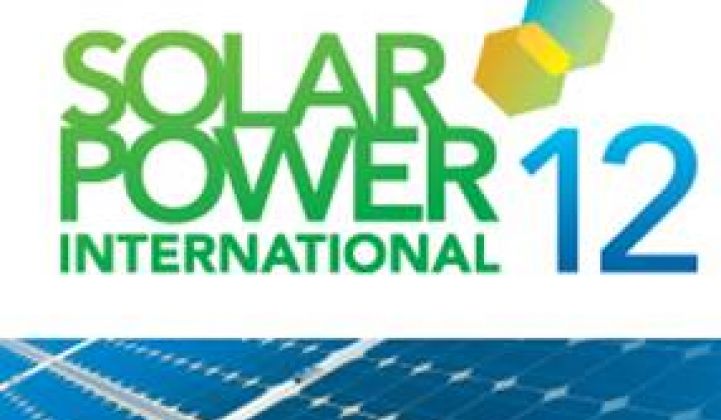One of the anecdotes I've been hearing a lot about in the halls at Solar Power International in Orlando this week came from the opening day CEO panel addressing "Change in an Uncertain Market." The moderator asked the CEOs whether they thought the solar industry would be better under a Romney or Obama administration. The surprise? Everyone ran for safety, answering that it wouldn't matter for them or the industry who wins in November.
As a CEO, I know why no one wanted to answer the question. At the end of the day, CEOs have to hold the interests of their companies and shareholders paramount. That means they have to be prepared to work with whoever is occupying the White House. And there's no value to politicizing the industry by taking sides if you make enemies in places where you need friends. So when in doubt, the safe answer wins.
But there's a downside to giving a safe answer in a situation where the audience knows there are clear differences. It hurts credibility because it leaves the audience questioning whether the answer is authentic.
Here's how I would have answered the question had I been on the panel.
First, solar is going to play a part in mainstream energy markets no matter who is in the White House next spring. Ask any energy expert what our future holds and the answer is always some combination of "solar, wind, and gas." Why? Solar is increasingly cost-competitive, the need for renewables is increasingly popular with voters, and once our economy recovers we're going to need a lot more generation.
But that's a long ways from saying there's no impact of one choice over another. There are many ways our nation can reach a clean energy future, but some are longer and harder than others. Reading the Romney and Obama energy plans, you'd be hard-pressed not to notice the difference in the roles solar and renewables play in each. In Romney's plan, solar and wind are graciously allowed to sit at the table, whereas for Obama, clean energy is a clear priority. For Romney, wind and solar are nice-to-haves; for Obama they're must-haves.
This is a big difference. Once we get past all the election-cycle hype, both parties essentially agree that our energy future is "all of the above," "solar, wind, gas," "energy independence" or some such portfolio approach. However, within that formulation is a range of very different outcomes for our country depending on how you decide to focus energy policy. Does "all of the above" mean mostly-gas-with-a-little-green or as-much-renewables-as-possible-supported-by-gas?
The most important thing a president does is set the agenda for our nation by sending a clear signal about legislative priorities. In this case, it's clear that the candidates put very different emphasis on the components that go into "all of the above." Under Obama, solar and wind are likely to be a centerpiece of energy policy with strong support. Under Romney, renewables will participate in achieving energy independence but they're unlikely to be essential.
To anyone who cares about what the next few years look like for renewables, those are important differences. Solar will be a part of our future no matter what the outcome, but it's the "how" and "to what degree" that will matter.
***
Arno Harris is the CEO of Recurrent Energy. This article originally appeared on Arno's blog.



